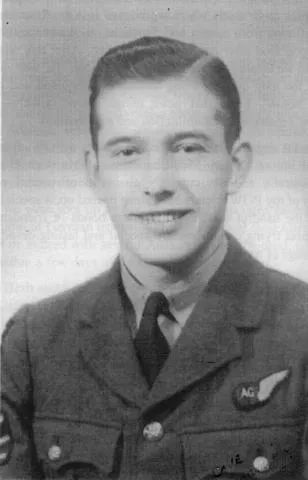Report of Wt. Off. J.A.Bannister:
Heavy A.A. fire over target. Damage to starboard fuel tank - loss of fuel - engine stopped 10 mins. out of Rostock on course for Esbbjerg. Continued more or less on course until over Jutland. Other engine failing, aircraft abandoned.
Dunn and Philson uninjured, Davies lost tip of finger when jettisoning escape door. Self (Bannister) struck tailplane, both legs fractured, opened chute, lost consciousness. Landed in farm field c 2.00-2.30 am. Found 5 hours lated by farm people, taken to Hornyld Sygehus..
Right leg amputated 3 weeks later. Moved to Veile after 5 weeks. Then Schleswig, Stadt Rhoda, Bad Sulza, Lansdorf. Repariated November 1943 via Sasanitz, Trelleborg, Gothenburg.




